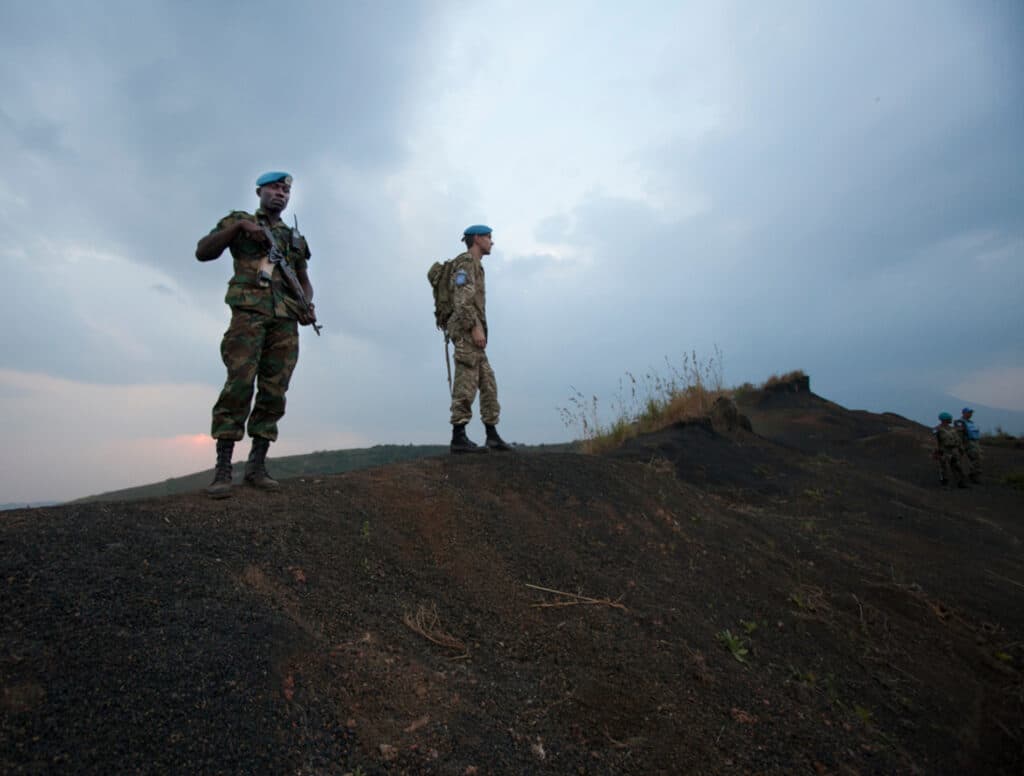
Sources of international humanitarian law
The foundations of international humanitarian law (IHL) in treaty and customary law.
International humanitarian law (IHL) has its main sources in customary international law and treaty law, such as the Geneva Conventions.
The formal and informal regulation of armed conflict has existed for almost as long as armed conflict itself.
The Lieber Code of 1863 is recognised as the first modern codification of these customs and rules, enforced against those fighting in the American Civil War.
Since then, legal treaties and customary practise have developed, which together form an extensive legal framework regulating modern conflict. This framework covers a range of issues including the protections of civilians, prisoners of war, conduct of hostilities, wounded and sick, shipwrecked, weapons, occupation, detention, cultural property, and naval warfare.
Treaty law and IHL
The four Geneva Conventions of 1949, together with the Hague Conventions of 1907 and customary international law, are the core sources of modern international humanitarian law (IHL).
“Hague Law” and “Geneva Law”
IHL is often broken down into two sub-categories, referred to as ‘Hague Law’ and ‘Geneva Law’. This division reflects the development of IHL, with Hague Law (through the Hague Conventions of 1899 and 1907) regulating the conduct of armies during hostilities, and the Geneva Conventions regulating issues of protection and how other people should be treated.
With the adoption of the Additional Protocols to the Geneva Conventions, which include extensive regulation of topics traditionally referred to as Hague Law, the separation is less relevant in today’s practice.
The Hague Regulations and Conventions
The Hague Conventions of 1899 and 1907 and their annexed regulations are a set of conventions primarily regulating the conduct of hostilities. The Conventions represent the basic and commonly accepted rules of engagement – the legal framework covering the means and methods of warfare.
While many of these rules have been updated and improved, especially through the Fourth Geneva Convention and Additional Protocols, they remain a key source of international law and are accepted universally as customary international law.
The IV Hague Convention is of particular importance during occupation and sets out a definition of occupation which remains applicable to this day. It also includes some of the key principles that regulate occupation, namely the obligation to ensure public order and civil life, and to respect of private property.
The Geneva Conventions: History and content
The Four Geneva Conventions of 1949 represent the fundamental treaty law that regulates issues of protection in situations of armed conflict. Whilst the Geneva Conventions were codified in 1949, they are built on earlier conventions developed in the late 19th and early 20th Century. With the exception of Common Article 3, the protections afforded under the Geneva Conventions are limited to international armed conflicts.
What is the difference between each of the four Geneva Conventions?
- The First Geneva Convention (GCI) provides protection to wounded and sick.
- The Second Geneva Convention (GCII) provides protection to the wounded, sick and shipwrecked in armed conflicts at sea.
- The Third Geneva Convention (GCIII) provides protections for prisoners of war.
- The Fourth Geneva Convention (GCIV) provides protection to civilians in armed conflict, including those living under occupation.
The First Geneva Convention, which comprises a mere ten articles, was adopted in 1864 by 12 nations to afford protection to wounded and sick soldiers in times of armed conflict on land.
In 1929, a second treaty was drafted to protect the wounded, sick, and shipwrecked in armed conflict at sea. After the atrocities committed against prisoners during the First World War, the international community adopted the Third Geneva Convention in 1929 to ensure the protection of prisoners of war (POWs).
The limitations of the law were highlighted during the Second World War, and, as a result, in 1949 the first three Conventions were revised. Moreover, a fourth convention was adopted to afford specific protection to civilians in armed conflict, including to those populations living under occupation.
Common Article Three
One key provision common to all four Geneva Conventions is Article 3 (Common Article 3), which sets out the fundamental guarantees for all situations of non-international armed conflict.
These include the absolute prohibition of murder for those not engaged in hostilities, and the prohibition of torture, mutilation, taking of hostages, execution without proper trial, and all cruel and degrading treatment. In addition, Common Article 3 stipulates that in all circumstances, persons must be treated humanely and impartially and that the wounded and sick shall be collected and cared for.
Common Article 3 is the only article in the Geneva Conventions to provide protections in a non-international armed conflict (NIAC).
The First Additional Protocol to the Geneva Conventions
Additional Protocol I to the Geneva Conventions of 1977 (API), applicable to international armed conflicts, extends the protection provided to civilians and also sets out rules on the conduct of hostilities (traditional Hague Law) which defines the lawful means and methods of warfare. For example, API sets out the universally accepted definition of a military object that may be targeted during hostilities.
The First Additional Protocol also widens the category of conflicts which can be classified as international and hence subject to broader regulation than non-international conflict. These include those “fighting against colonial domination and alien occupation and against racist regimes in the exercise of their self-determination.”
Many of the articles, especially those regulating hostilities and providing fundamental guarantees under Article 75, are universally accepted as customary law, binding on all states and in all types of conflict.
Additional Protocol II to the Geneva Conventions
Additional Protocol II (APII) expands the scope of Common Article 3, and gives additional treaty protection in situations of internal armed conflicts. Like any treaty of international law it only binds those states that have signed and ratified it.
Some articles are also regarded as customary law, for example, Article 9 which relates to protection of medical and religious persons.
Customary international law and IHL
Customary international law (CUIL) is a fundamental source of IHL and affords legal protection where a lack of ratification of key treaties, especially in circumstances of internal armed conflict, creates protection gaps.
While customary law is an important tool of protection during armed conflicts, it has its limitations: unlike in a treaty, the rules are not always written down in a clear and accessible format, and the content of the rules is generally less specific than in a treaty.
Therefore, a useful resource for IHL practitioners is an ICRC commissioned project which identified 161 rules of IHL considered to be customary international law. These have been collected in the ICRC's Customary International Law Database.
Martens Clause
Situations of armed conflict are not exclusively regulated by treaties and custom but by the principles of public conscience and humanity referred to by the Martens Clause. The Martens Clause was outlined in the preamble of the 1899 Hague Convention and remains a cornerstone for the understanding and interpretation of IHL to this day.
Until a more complete code of the laws of war is issued, the High Contracting Parties think it right to declare that in cases not included in the Regulations adopted by them, populations and belligerents remain under the protection and empire of the principles of international law, as they result from the usages established between civilised nations, from the laws of humanity and the requirements of the public conscience.
In other words, the principles of public conscience and humanity should be the guiding notions in framing the appropriate application of international humanitarian law.



